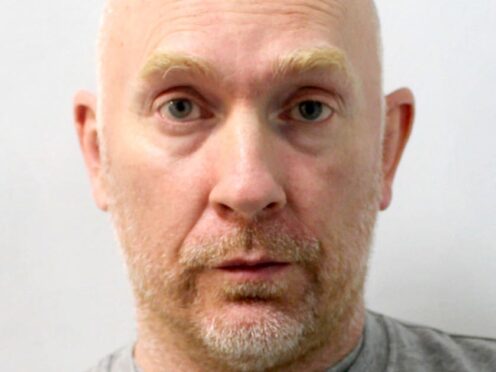
Sarah Everard’s killer Wayne Couzens should never have been given a job as a police officer and chances to stop the sexual predator were repeatedly ignored and missed, an inquiry has found.
Police “repeatedly failed” to spot warning signs about his “unsuitability for office”, a damning report concluded amid fears many more women and girls could have been victims of Couzens.
Publishing her findings on Thursday, inquiry chairwoman Lady Elish Angiolini warned without a radical overhaul of policing practices and culture, there is “nothing to stop another Couzens operating in plain sight”.
Three different police forces “could and should” have stopped Couzens from getting a job as an officer, she said, as she identified a catalogue of failings in how he was recruited and vetted, and how allegations against him were investigated.
Miss Everard’s family said in response they believe the 33-year-old marketing executive died because Couzens was a police officer, adding: “She would never have got into a stranger’s car.”
Branding Couzens a “predatory sex offender and murderer”, the inquiry laid bare a history of alleged sexual offending dating back nearly 20 years before the off-duty armed Metropolitan Police officer abducted Miss Everard in March 2021.
According to the report, over the last two years the inquiry uncovered evidence Couzens was accused of a string of other incidents of sexual abuse, including a “very serious sexual assault of a child barely into her teens”.
The findings identified at least five incidents which were not reported to police, with Lady Elish saying she believes there could be more victims.
Setting out a raft of recommendations to “make sure something like this can never happen again”, Lady Elish said “now is the time for change”, adding: “Wayne Couzens should never have been a police officer. And, without a significant overhaul, there is nothing to stop another Couzens operating in plain sight.
She urged “all those in authority in every police force in the country” to read the report and “take immediate action”.
Among the measures, Lady Elish called for an urgent review of indecent exposure charges against serving officers and said reports of the crime need to be taken seriously.
She said it was “astonishing” that even after Couzens’ arrest and a review of his vetting clearance, the Met told the inquiry in 2022 “they would still have recruited him if provided with the same information”.
Miss Everard’s mother Sue, father Jeremy, sister Katie and brother James said in a statement: “It is obvious that Wayne Couzens should never have been a police officer. Whilst holding a position of trust, in relative he was a serial sex offender.
“Warning signs were overlooked throughout his career and opportunities to confront him were missed.
“We believe that Sarah died because he was a police officer – she would never have got into a stranger’s car.”

Home Secretary James Cleverly said Miss Everard was “failed in more ways than one by the people who were meant to keep her safe”, but stressed the actions of Couzens were “not a reflection on the majority of dedicated police officers”.
Meanwhile, Met Commissioner Sir Mark Rowley described the findings as “an urgent call to action for all of us in policing” and said the service must “go further and faster” to gain back the trust of the public in the wake of the scandal.
National Police Chiefs’ Council chairman Gavin Stephens said hearing the inquiry’s findings left him “aghast”, adding: “On behalf of policing I cannot adequately express to the Everard family how sorry we are to them and all those who loved Sarah.”
In the wake of the report, the Home Office announced any officer charged with indictable offences, the most serious crimes which must be dealt with by crown courts, would be automatically suspended from duty until there is an outcome in the case.
But this does not extend to charges of indecent exposure, despite the concerns about the crime raised. There will, however, be a presumption that officers will be suspended for either way offences like indecent exposure, which can be dealt with by both magistrate and crown courts. Chief constables will need a clear reason to explain if they stray from this direction, the Home Office suggested. Suspension for all other offences would be at the discretion of force leaders.
The department did not explain why forces were not being ordered to instigate automatic suspension in all cases of criminal charges made against officers. The rule does not appear to extend to police staff.
Couzens – who will never be released from prison – used his status as a police officer to trick Miss Everard into thinking he could arrest her for breaking lockdown rules in place during the coronavirus pandemic.
After the harrowing killing, it emerged there had been concerns about Couzens’s behaviour while he was a police officer, with reports he was nicknamed “the rapist”.
He started his career at Kent Police as a special constable, became an officer with the Civil Nuclear Constabulary in 2011 and then moved to the Met in 2018.
Couzens indecently exposed himself on several occasions before the murder, including twice at a drive-through fast-food restaurant in Kent in the days prior to the killing.
He was not caught despite driving his own car and using his own credit card at the time.
Then-Met police constable Samantha Lee was sacked and barred from being a police officer after it was found she had not properly investigated the incidents.
On Thursday, Kent Police apologised for failing to properly investigate when Couzens was reported for indecent exposure in 2015, saying it accepted the probe was “flawed” because the officer tasked was “not a trained investigator”.
Couzens was also later revealed to have been part of a WhatsApp group with fellow officers that shared disturbing racist, homophobic and misogynist remarks.
Ordered by then home secretary Priti Patel, the inquiry tasked with looking at how Couzens came to be a police officer and was able to carry out the murder has so far cost £2.9 million, according to figures to September last year.
The first phase of the inquiry considered evidence covering a 20-year period, reviewing more than 100,000 pages of documents and carrying out 144 interviews, prompting 76 conclusions and making 16 recommendations for improvement.
The inquiry continues in two parts, looking at the crimes of David Carrick – who also served in the Met’s Parliamentary and Diplomatic Protection Command and was jailed for life last year after being unmasked as a serial rapist – and considering the wider problems within the police in the wake of both cases.

Enjoy the convenience of having The Sunday Post delivered as a digital ePaper straight to your smartphone, tablet or computer.
Subscribe for only £5.49 a month and enjoy all the benefits of the printed paper as a digital replica.
Subscribe